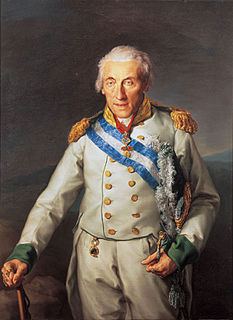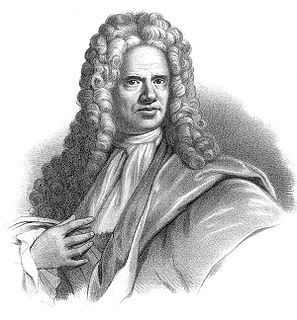Biography
Cicci was born in Pisa in 1760. [1] The family was originally from Fucecchio but with proof of having Pisan origins prior to the year 1319 they were considered local nobility. Her father was Domenico Alessandro Cicci, a doctor in law and in letters. Her mother, Maria Anna was the daughter of the Captain Giovanni Gaetano Pagnini, Commander of the Cavalleggieri di Rosignano. She died when Maria Luisa was two years old. Her father supervised her education until she was eight. Then he sent her to finish her education in the Monastery of Santa Marta and then to the Monastery of San Bernardo until she was fifteen. At that point she returned home where she began studying the poets and especially Homer, Dante, Petrarch, Saverio Bettinelli, Fulvio Testi and in particular Gabriello Chiabrera and Carlo Innocenzo Frugoni. She then began to study philosophy physics including Locke and Newton and English literature including Milton, Shakespeare. Cicci then began to study history, English and French. She began writing poetry when she was ten and devoted most of her life to poetry. [2] [3] [4] [5] [6] [7]
Cicci was admitted to the Academy of Arcadia in Pisa in 1786 where she took the name of Emenia Tindarida. She also was admitted to Accademia degli Intronati of Siena that year where she took the name The Incognita. She lived in her brother's home and hosted the salon's there.
The local circle included Tito Manzi, Giovanni Domenico Anguillesi, Elena Mastiani Brunacci, Francesco Masi, Giovanni Salvatore de Coureil, Luigi Migliaresi, Giovanni Salvadore De Coureil and Ridolfo Castinelli. Cicci's writings made her famous. She remained independent and refused any marriage proposal. However shortly after the deaths of two of her close friends she began to feel ill and died at the age of 34 in 1794 in Pisa. [1] [2] [3] [8] [9] [4] [5] [6] [7] [10]
Unfortunately there is almost nothing left of her writings. She had most of them set on fire just before she died. However her brother and her friends were able to recite some and had them published after her death. [4]

The House of Medici was an Italian banking family and political dynasty that first began to gather prominence under Cosimo de' Medici in the Republic of Florence during the first half of the 15th century. The family originated in the Mugello region of Tuscany, and prospered gradually until it was able to fund the Medici Bank. This bank was the largest in Europe during the 15th century, and it facilitated the Medicis' rise to political power in Florence, although they officially remained citizens rather than monarchs until the 16th century.

The Accademia della Crusca, generally abbreviated as La Crusca, is a Florence-based society of scholars of Italian linguistics and philology. It is one of the most important research institutions of the Italian language, as well as the oldest linguistic academy in the world.

Prince Maximilian of Saxony was a German prince and a member of the House of Wettin. He was the sixth but third and youngest surviving son of Frederick Christian, Elector of Saxony, and the composer Duchess Maria Antonia Walpurgis of Bavaria.

Giambattista Pittoni or Giovanni Battista Pittoni was a Venetian painter of the late Baroque or Rococo period. He was among the founders of the Academy of Fine Arts of Venice, of which in 1758 he became the second president, succeeding Tiepolo.

In mathematics, a Clélie or Clelia curve is a curve on a sphere with the property:

A crostata is an Italian baked tart or pie, also known as coppi in Naples and sfogliata in Lombardy. The earliest known use of crostata in its modern sense can be traced to the cookbooks Libro de Arte Coquinaria by Martino da Como, published circa 1465, and Cuoco napolitano, published in the late 15th century containing a recipe titled Crostata de Caso, Pane, etc..
Louis Henry was the Count Palatine of Simmern-Kaiserslautern from 1653 until 1673.

Maria Grazia Schiavo is an Italian classical soprano who is particularly known for her performances of music from the baroque period. She has performed with major opera houses in Austria, France, Germany, Italy, and Spain, and has appeared in concerts throughout Europe.

Nino Machaidze is a Georgian operatic soprano. She performs in 19th-century Romantic repertoire, primarily in operas by Rossini and Verdi as well as French operas. Beginning her career at La Scala, she gained international attention after being cast as Juliette in Gounod's Roméo et Juliette at the 2008 Salzburg Festival, after which she earned the nickname "Angelina Jolie of Opera" from the Austrian press.

Urban Hjärne was a Swedish chemist, geologist, physician and writer.

Aleida Assmann is a German professor of English and Literary Studies, who studied Egyptology and whose work has focused on cultural anthropology and Cultural and Communicative Memory.
Marina Rebeka is a Latvian soprano, active on both opera and concert stages. Associated with Violetta in Verdi's La traviata, she performs primarily in the 19th-century Italian and French repertoire, most notably works by Gioachino Rossini, in addition to Donna Anna in Mozart's Don Giovanni, another frequent role.

Caroline Philippine von Briest was one of the most prolific women writers of the Romantic period. She wrote novels, short stories, fairy tales, as well as essays, on Greek mythology, on the history of fashion, and travelogues. Considered to be one of the most accomplished women of Germany of her time, her numerous works gained her a high degree of celebrity.

Eduard Wunder (1800–1869) was a German philologist, and from 1843 to 1866 Rector of the Fürstenschule Grimma in Saxony.

Luisa-Marie Neubauer is a German climate activist. She is one of the main organisers of the school strike for climate movement in Germany, where it is commonly referred to under its alternative name Fridays for Future. She advocates a climate policy that complies with and surpasses the outdated Paris Agreement and endorses de-growth. Neubauer is a member of Alliance 90/The Greens and the Green Youth.
Marie-Marguerite Brun was a French lexicographer and poet.
Marie Bruneau des Loges, was a renowned French Salon holder.

Ita Maximowna was a Russian-German scenic designer, costume designer and illustrator. She was one of the first women in the professions in Germany who worked internationally. Trained as a painter, she came to the theatre late, after World War II in Berlin, and became a scenic designer first in theatres of the city, then internationally both for plays and opera, and in collaboration with directors such as a Günther Rennert and conductors such as Herbert von Karajan.
Giuseppe Fiocco was an Italian art historian, art critic, and academic. He is known for his research and writings on Venetian and Florentine artists.

Trischaken is an historical Austrian and German gambling card game for three to five players and related to French Brelan.














